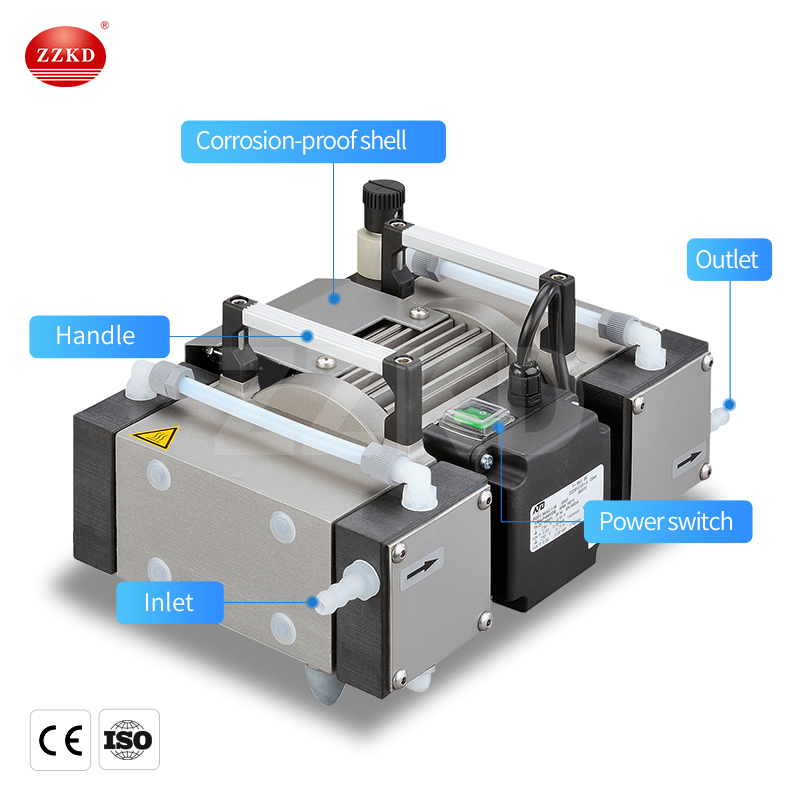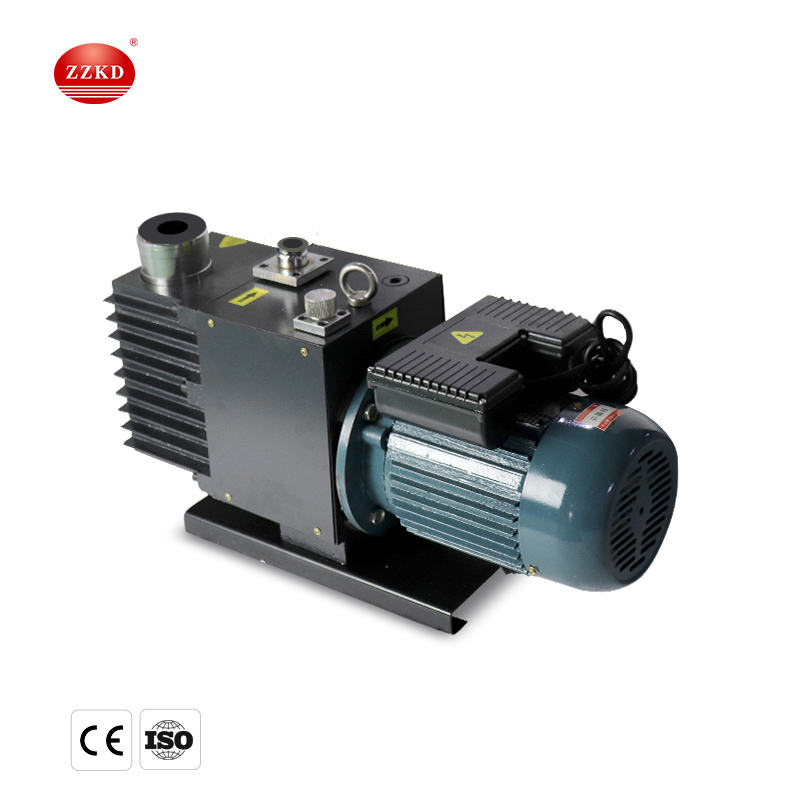Vacuum Pump Used In Laboratory For Extraction
The vacuum pump is the most suitable equipment for conveying volatile liquids, and it can also convey many different types of viscous liquids quickly and efficiently. It can also transport media without damaging the system, and it is completely enclosed. Today we will introduce the vacuum pump for laboratory use. The vacuum pump used in the laboratory requires good performance, small size and small footprint. At present, our company has launched three vacuum pumps suitable for use in laboratories with experimental instruments. These three vacuum pumps are: circulating water vacuum pump, rotary vane vacuum pump, and diaphragm vacuum pump. Below we introduce the details of these three vacuum pumps in detail.
Circulating water vacuum pump
The circulating water vacuum pump is a new type of multi-purpose vacuum pump designed with circulating water as the working fluid and using the principle of jet flow to generate negative pressure. The working medium of the circulating water vacuum pump is water, and the whole adopts double taps. It can be used alone or in parallel with two vacuum gauges. The circulating water vacuum pump provides vacuum conditions for evaporation, distillation, crystallization, drying, sublimation, filtration and decompression, degassing and other processes, and is especially suitable for laboratories in colleges and universities, scientific research institutes, chemical industry, and other industries. We produce vertical circulating water vacuum pumps and desktop circulating water vacuum pumps, which can be used as rotary evaporators, double glass reactors, vacuum drying ovens, thin film evaporators, multifunctional reactors, vacuum thin film concentrators and other laboratories Common equipment accessories.

Advantages of circulating water vacuum pump:
①The water saving effect is obvious. Due to the use of water circulation, the water added to the water tank can be recycled. It overcomes the phenomenon that a lot of water is wasted when the vacuum is obtained by directly flushing tap water.
②Comprehensive use of multi-function, in addition to providing vacuum conditions, this machine can also perform external circulation operations at the same time to provide circulating cooling water for the reaction device.
③The model is new and easy to use. The pump head of this machine is directly immersed in water, the height of the whole machine is low, the volume is small, the weight is light, and it is easy to move.
④The machine is equipped with two air extraction nozzles, which can be used for air extraction independently or at the same time. The air extraction passage is equipped with a check valve, which can prevent the circulating water from flowing back into the vacuumed equipment when the vacuuming operation is stopped unexpectedly.
⑤ Corrosion-resistant and pollution-free. The pump parts of this machine are made of stainless steel, which is not affected by corrosive substances such as acid and alkali, and also does not pollute the laboratory such as oil pollution.
⑥The machine works stably and reliably with low noise.
⑦ The main components of this model vacuum pump are made of stainless steel and anti-corrosion materials.
Diaphragm vacuum pump:
The working principle of the diaphragm vacuum pump is the circular motion of the motor. The diaphragm inside the pump is reciprocated through the mechanical device, thereby compressing and stretching the air in the pump cavity to form a vacuum, and a pressure difference is generated between the air outlet and the external atmospheric pressure. Under the action of the pressure difference, the gas is sucked into the pump chamber, and then discharged from the exhaust port.

Diaphragm vacuum pump product advantages:
Absolutely dry, oil-free vacuum environment
·Long service life of the diaphragm
·Low vibration, low noise
·High operational safety factor
·Easy maintenance with simple diaphragm and replacement valve
Suitable for all laboratories with dual voltage motor or DC drive
Diaphragm vacuum pumps have the following characteristics:
⒈ It does not need any working medium (oil-free) and does not produce any pollution, thus ensuring a clean vacuum effect.
⒉ The design of this machine adopts new technology and new material, with compact and reasonable structure, small size, light weight and convenient movement. Smooth operation, high vacuum and low noise.
⒊ The film movement in a frictionless state does not generate heat, has no friction loss, and has a long service life.
⒋ The machine is designed with a self-cooling and exhaust system, which can run continuously for 24 hours.
⒌ The pressure-adjustable design can meet the needs of different suction filtration pressures within a certain range.
Diaphragm vacuum pumps are mainly used in medical and pharmaceutical product analysis, fine chemicals, biochemical pharmaceuticals, food inspection, public security criminal investigation technology and other fields.
Rotary vane vacuum pump:
A rotary variable volume vacuum pump that divides the pump chamber into several variable volumes. Usually, the gap between the rotary vane and the pump cavity is sealed with oil, so the rotary vane vacuum pump is generally an oil-sealed mechanical vacuum pump. The rotary vane vacuum pump is a two-stage direct-connected structure. When the equipment obtains a vacuum, the high-pressure stage exhaust valve is closed, and the gas at the high-pressure stage inlet will be transferred to the second stage, and sucked and discharged through the second stage to obtain a certain amount of vacuum equipment. It can be used for electric vacuum device manufacturing, thermos bottle manufacturing, vacuum welding, printing, blister, refrigeration equipment repair and instrumentation matching. Wait. Because it has the advantages of small size, light weight and low operating noise, it is more suitable for use in the laboratory.

Advantages of rotary vane vacuum pump:
Rotary vane vacuum pump has the advantages of small size, light weight, low noise and convenient starting. In addition, there are measures to prevent oil return and measures to prevent oil leakage from oil seals and contaminate the site.
1. The rotary vane vacuum pump can be used alone or as the backing pump and pre-pumping pump of various high vacuum systems.
2. The air inlet of the rotary vane vacuum pump runs continuously open to the atmosphere, and should not exceed three minutes.
3. The pump is not suitable for pumping out gas that is corrosive to metal, chemically reacts with pump oil, contains particulate dust, and is explosive gas with excessive oxygen content.
5. The working environment of the rotary vane vacuum pump: within the temperature range of 5℃-40℃, the relative temperature is not more than 90%, and the air inlet pressure is less than 1333Pa, allowing long-term continuous operation.
6. When installing the power supply, wire according to the regulations of the motor plate, and the direction of rotation of the motor should be consistent with the direction of the arrow on the support.


